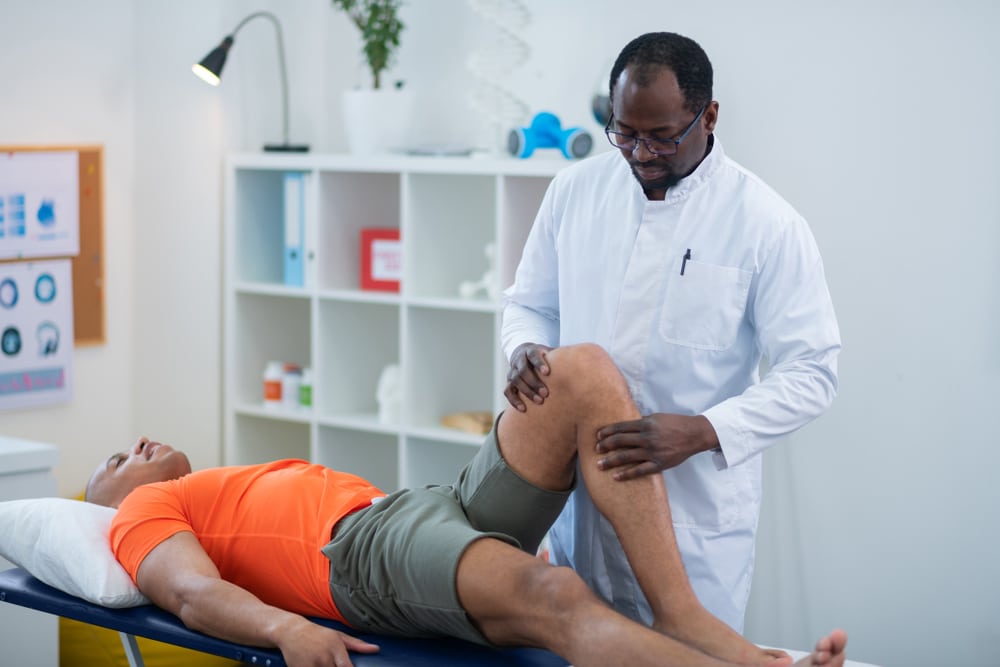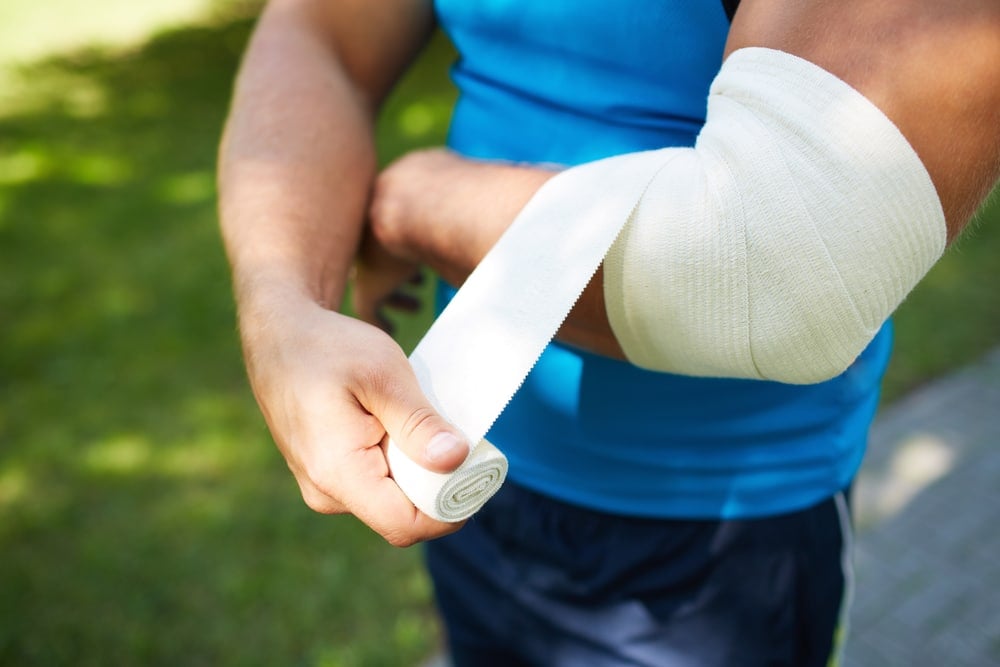When you’ve been in an auto accident, it’s easy to become overwhelmed by everything you have to do: filling out police reports, talking with insurance agents, making arrangements for new transportation and more. Managing the pain you experience due to the trauma of the accident doesn’t have to be overwhelming, though. With a quality pain management doctor to help develop a plan to treat your pain, you can feel confident you’re doing everything possible.
What Do Pain Management Doctors Do?
Pain management doctors have to undergo rigorous training to become certified as pain management specialists. The benefit of working with car accident pain specialists is they understand the variety of options that can be used alone or together in order to effectively treat pain without causing undue stress to the car crash victim.

Your primary care doctor is an important part of your everyday health, but when you have been in an auto accident, you may benefit from the expertise of a pain management doctor who works exclusively with injuries and pain that are the result of car crashes. Because these expert doctors spend every day with patients suffering from auto accident injuries and pain, they have a better understanding of how to approach developing and executing a pain relief plan.
What Kind of Injuries Can Come from a Car Crash?
Every auto accident is different, and there is no limit to the range of injuries that can be caused by an auto accident. There are, however, some injuries that are more common than others in vehicle crashes.
Bruises, Cuts and Scrapes
For those who are very lucky, bruises, minor cuts and scrapes may be the worst injury that they sustain in a vehicular accident. These may not require a visit to a car accident doctor, although it never hurts to have even minor injuries be evaluated by a professional to ensure there is no underlying damage that an untrained eye might not recognize.
Whiplash
Possibly the most well-known injury that can be sustained from a car crash, whiplash is a soft tissue injury that can happen when the collision of a car into another object or a sudden stopping creates a jerking motion. Whiplash is a relatively mild injury compared to other bodily damage that may occur in an auto accident, but it can still be very painful.

Tendons and ligament strain in the back, shoulders, and neck may all be a result of whiplash. Aside from neck pain, whiplash can also cause your range of motion to be limited and can damage the reflexes and sensation of your limbs. A car accident doctor is trained to recognize the symptoms of whiplash and understand how to treat it while effectively managing the pain.
Bone Fractures and Breaks
When a car collides with another force, the individuals within the car or cars involved can be knocked about or even ejected from the vehicle. Though the damage can be significantly worse without a seatbelt on, even those wearing seatbelts can be hurt in the collision. It is even possible for seat belts to fracture or break bones as they respond to the force trying to make sure you stay secure in your seat. Fractures and breaks in the arms and legs are common in auto accidents, as are ones in the ribs, collarbone and back.

Depending on the location of the fracture or break and the severity of it, treatment may vary. Some of these injuries may be healed using a cast and effective pain management and be back to normal in a short period of time. Others may require much longer periods of time to heal and chronic pain may develop. A pain management doctor is qualified to handle all degrees of these injuries.
Internal Bleeding
Internal bleeding occurs when the inside of the body is significantly bruised during an auto accident. Because there is no blood that exits the body and outward evidence of the injury may not be there, it is important to pay attention to any internal pain you may feel. Keep an eye out for skin discoloration as this can be one of the signs that there is internal bleeding occurring.
Those who have been in an auto accident can benefit from the expertise of a car accident doctor as they know how to identify and treat internal bleeding. Blood transfusions and intravenous fluids are often used to treat internal bleeding with pain management measures helping to ease symptoms.
Brain Injuries
One of the more frightening injuries that can be sustained in a car crash is a traumatic head injury. Damage to the brain can cause not only physical issues but problems with mental and emotional health and functioning, as well. Concussions may be divided into three grades: mild, moderate and severe. Any incident where a concussed individual loses consciousness is considered severe and may benefit by being addressed by a medical professional. Traumatic brain injuries are those that are caused when the tissues of the brain are torn, the brain is bruised or something penetrates the skull.
Brain injuries are among the most serious injuries that a person can experience in life. Treatment will vary from person to person and between circumstances but the experience of a car accident doctor may be particularly beneficial to those who are concerned they have sustained a brain injury.
Other Injuries
Because every auto accident is different, the range of injuries that can be incurred when a person is involved in one is vast. In addition to physical injuries like a herniated disc, many people also experience emotional trauma, with some developing post-traumatic stress disorder (PTSD) as a result. PTSD from car accidents can make it difficult for sufferers to drive, be around cars and otherwise travel which can have a profound impact on their lives.
What Treatments Might a Pain Management Doctor Use in My Pain Management Plan?
Most pain management doctors understand that treating pain requires a holistic approach. This may mean combining many different types of treatment at a pain management clinic in order to create the most effective treatment plan. Part of this may be working with other medical professionals including physical and occupational therapists, chiropractors, psychologists and more.

A pain management treatment plan may include pieces that help provide short-term relief for pain such as prescriptions for medications and more long-term approaches such as physical and occupational therapy. Pain management treatment plan may include any of the following types of pain medicine:
Benzodiazepines
Benzodiazepines are a class of drugs that are typically prescribed for conditions such as anxiety, insomnia, and panic disorders. They are sometimes prescribed in the treatment of chronic pain, but usually only for short periods of time under the advice of a pain management doctor because people can become addicted to them. Commonly prescribed benzodiazepines are Klonopin, Ativan, Xanax, and Librium.
Beta-Blockers
Beta-blockers are designed to reduce blood pressure but can also be useful in alleviating pain for some. They can be especially effective in treating pain associated with headaches and migraines. Low-dose beta-blockers may also be used to treat chronic pain when under the supervision of a pain management doctor. Commonly prescribed beta-blockers include atenolol, propranolol, metoprolol, and bisoprolol.
Cannabinoids
While cannabinoids are not legal in all states, in New York and New Jersey, medicinal cannabis is an option. Research shows that cannabinoids, which are anti-inflammatory, can be highly effective in treating pain. Synthetic cannabinoids are also available, and nabilone and dronabinol are among those that may be used in pain management.
Opioids
Opioids have been used in different forms to treat pain for centuries. They can be extremely effective but unfortunately also have a powerfully addictive nature and therefore should be used only under the strict supervision of a pain management specialist. In addition to their addictive nature, they also can have other negative side effects including sedation, nausea, and constipation. Commonly prescribed opioids include hydrocodone, oxycodone, morphine, and fentanyl.
Non-Opioid Pain Medications
There are pain medications available that are alternatives to opioids which can be addicting and are unable to be used in some cases where there is a history of addiction. Common examples of these are acetaminophen, ibuprofen, and naproxen. Sometimes anticonvulsants such as gabapentin can be used to treat nerve pain. Corticosteroids are anti-inflammatory and options such as cortisone and prednisone may be used to manage pain caused by inflammation.
Topical pain relievers such as capsaicin and lidocaine may be used to treat some forms of muscle pain. Antidepressants such as amitriptyline, doxepin, and nortriptyline may be used as part of a pain management treatment pain as sufferers of chronic pain also suffer from depression, as well.
Cognitive-Behavioral Therapy
Psychological treatment for car accidents and chronic pain isn’t limited to the prescription of anti-depressants. Cognitive-behavioral therapy is a form of therapy that is rooted in the belief that humans can change their thought patterns. Because the experience of pain is in the brain, cognitive therapy can help the body to process experiencing pain better. In addition to helping sufferers reduce stress, cognitive behavioral therapy has also been shown to improve the quality of life and sleep in those with chronic pain.
Physical Therapy
Physical therapy (PT) is one of the first lines of defense in the treatment of pain following a traumatic incident like a car accident. Orthopedic physical therapy and neurologic physical therapy are both commonly used in the treatment of chronic pain. Physical therapy is appealing as a treatment because it doesn’t require medication and those who participate in it have agency over their bodies during the process and can experience satisfaction from the progress they make.
There are many forms that physical therapy may take. Massage can be part of a PT treatment plan, as can hot and/or cold therapy. Much of PT, however, comes in the form of targeted exercise and movements designed to increase strength and encourage mobility.
Therapeutic Exercise
Therapeutic exercise is exercise done under the advice of a medical professional. Countless studies have shown that few things improve health more effectively than the implementation of a physical fitness plan. As the body’s strength increases, so do its flexibility, stamina, and resilience. These improvements help the body deal with pain better.
Acupuncture

Acupuncture originated in China thousands of years ago but has become increasingly popular in Western culture over the last century. In acupuncture, needles are inserted into the skin at specific places in the body to stimulate the central nervous system. Studies have shown that acupuncture treatment may offer relief to chronic pain sufferers, particularly those who have significant pain in the back, neck and knees and those who suffer from headaches. Acupuncture treatment should only be used by a trained professional under the advice of a pain management specialist.
Chiropractic Care
Chiropractic therapy is focused on adjusting the structure of the body and is largely focused on the spine. Spinal manipulation is most commonly used to help alleviate pain, though other treatments such as manipulative therapies and ergonomic training may also be part of a chiropractic treatment plan. Spinal manipulation, or strong pressure applied to the joints of the vertebrae of the spine, should only be performed by a medical professional.
Meditation
Another ancient practice, meditation has been used for many years to help focus the mind and improve the body. In meditation, participants learn to focus their attention on one thing for a length of time. In many cases, this is the process of breathing in and out. This helps the body to relax and increases feelings of calm. In addition to reducing inflammation and releasing endorphins, meditation has also been shown to decrease pain and increase pain tolerance over time.
When Should I Contact a Pain Management Doctor After an Accident?
If you have been in an auto accident and experienced pain issues or mental trauma, you may want to make arrangements to see a car accident doctor as soon as possible. For those who are in pain following a vehicular accident, seeing a pain management doctor may be especially beneficial in getting on the path back to a normal, pain-free life.
If you are suffering after an auto accident or are still wondering, “What does a pain management doctor do?” Schedule a call with No-Fault Doctors to learn more about developing a treatment with the best pain management doctors for you or your loved one today and get on the road to recovery.
Sources:
https://www.health.harvard.edu/pain/chiropractic-care-for-pain-relief
https://www.ncbi.nlm.nih.gov/pmc/articles/PMC3256772/
https://www.ncbi.nlm.nih.gov/pmc/articles/PMC4967367/
https://www.injuredcalltoday.com/what-to-expect-from-a-pain-management-doctor/
https://www.ncbi.nlm.nih.gov/books/NBK92054/
https://www.webmd.com/pain-management/features/cognitive-behavioral
https://health.clevelandclinic.org/how-you-can-ease-your-aches-and-pain-with-meditation/
https://www.health.harvard.edu/alternative-and-complementary-medicine/yoga-for-pain-relief
